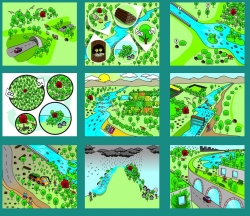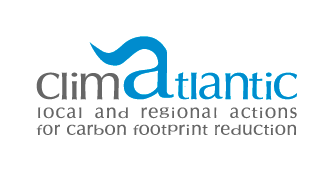NEWS & EVENTS : SOCIAL BEHAVIOUR

Can nature help reduce the impacts of climate change?
09.23.2015
Building and managing a well-planned network of natural areas might provide an effective and, in many cases, cheaper solution for coping with natural disasters such as floods or landslides. A new report published today by the European Environment Agency (EEA) explores how ‘green infrastructure’ can help Europe prepare for and reduce the loss from weather- and climate-related hazards.
climatlantic //
Weather- and climate-related hazards, including extreme precipitation, floods, wet mass movement (e.g. avalanches and landslides) and storm surges are among the costliest and deadliest natural hazards in Europe and globally. The EEA’s new report "Exploring nature-based solutions: the role of green infrastructure in mitigating the impacts of weather- and climate change-related natural hazards" (http://www.eea.europa.eu/publications/exploring-nature-based-solutions-2014) focuses on certain types of extreme events and hazards in Europe that are likely to be amplified by ongoing climate change.
As mentioned in the Green Infrastructure Strategy (http://ec.europa.eu/environment/nature/ecosystems/index_en.htm), the European Commission defines green infrastructure as a strategically planned network of high-quality green spaces. In this study, green infrastructure is defined by its capacity to provide a relevant number of ecosystem services. The maps presented in this study provide an overview of where specific weather- and climate-related natural hazards are likely to occur, where well-functioning ecosystem services exist which can support disaster risk reduction and climate adaptation so as to lessen the impacts of natural hazards (e.g. floods and landslides), and where the provision of ecosystem services may be improved.
Green infrastructure solutions that boost disaster resilience are also an integral part of EU policy on disaster risk management. Climate change and infrastructure development make disaster-prone areas more vulnerable to extreme weather events and natural disasters such as floods, landslides, avalanches, forest fires, storms and wave surges that cause loss of life and result in billions of euros of damage and insurance costs each year in the EU. The impacts of such events on human society and the environment can often be reduced using green infrastructure solutions.
To address some of these challenges, the report proposes a simple, practical methodology for screening (rather than assessing) ecosystem services in areas where green infrastructure may contribute to reducing current (or future) weather- and climate-related natural hazards. The report addresses landslides, avalanches, floods, soil erosion, storm surges and carbon stabilisation by ecosystems. For each benefit covered, the report provides a short literature review, assessment and results, and the data sets used.








